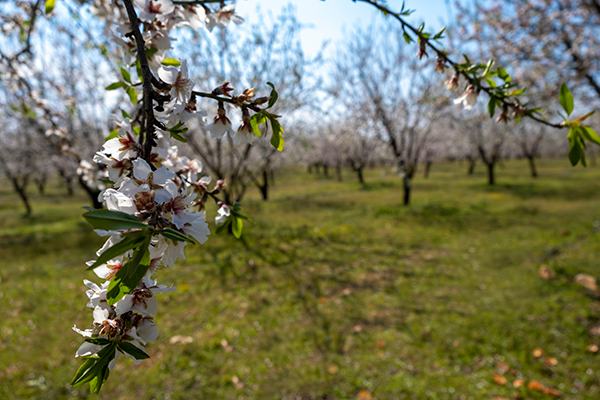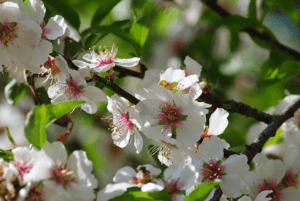
Is Your Nitrogen Ready for Bloom Season?
Early Season Nitrogen Management Considerations in Almonds
Contents
As spring approaches almond growers are once again making decisions on nutrient management, particularly nitrogen. It’s no secret that nitrogen prices remain high and almond prices are not where growers would like them to be. So, we must be very prudent with nutrient inputs.
How Much Nitrogen Should I budget for?

This involves a bit of estimation as we can’t accurately predict what the actual yield will be this early in the season. The best approach is to take a three-year average for established orchards and base your calculations on this value.
Almonds remove about 70 pounds of nitrogen per 1000 pounds of nut meat. Thus a 3000-pound crop removes about 210 pounds of nitrogen. Nitrogen uptake efficiency (NUE) must be considered when calculating proper nitrogen application rates. In drip and micro sprinkler irrigated almonds, NUE is estimated to be 75-85%, which is high, so assuming a NUE of 85%, the total amount of N that should be applied over the course of the season is about 250 lbs./acre.
When Should Nitrogen be Applied?
Timing of N applications to match tree demand is important to maximize NUE and minimize costly losses to the environment. Mature trees need more nitrogen in early spring during periods of active shoot growth, leaf activity, and photosynthesis. Shoot growth is vital for canopy development and the creation of fruiting spurs for next year’s crop. Almond nuts and shoots use about 80% of the season’s total nitrogen demand between bloom and mid-June. Split applications of nitrogen are favored to further maximize NUE as follows below.
- 20% February-March
- 30% April
- 30% May
- 20% September-early October
The first nitrogen application in the spring should be timed so that plant-available nitrogen is in the active root zone at 70% leaf out. Nitrogen applied much earlier than this timing runs the risk of leaching losses from rain or irrigation. From dormancy to 70% leaf out the nitrogen is provided entirely from storage organs in the tree (branches, trunk, and roots). See the table below presented in the publication Nitrogen Best Management Practices by the Almond Board of California.
For more information on nitrogen management in almonds, See this resource.
Nitrogen Stabilizers
The nitrogen cycle in soils is a leaky system, meaning significant environmental losses from volatilization, denitrification and particularly leaching can occur. Losses can be as high as 40% of applied N or more! On coarse-textured soils or where higher nitrogen application rates are needed, losses of nitrate-nitrogen due to leaching can be significant. NDURE DCD (dicyandiamide, CAS 461-58-5) is a powerful nitrification inhibitor that is approved by the Association of Plant Food Control Officials (AAPFCO). NDURE DCD added to UAN at 4-6 quarts per ton keeps nitrogen in the ammonium form longer making the nitrogen resistant to loss due to leaching or denitrification and thereby improving NUE.
See your Wilbur-Ellis Agronomist for specifics on your orchard.
| Tree Phenology – Tree Growth Stage | Key Nitrogen Dynamics |
|---|---|
| Bloom Time | Nitrogen demand is supported by immobilization of stored nitrogen |
| 70% Leaf Out | Nitrogen uptake from the soil begins and stored nitrogen is depleted |
| 100% Hull Growth | 30% nitrogen uptake from soil has taken place by 100% hull growth |
| Kernel Fill | 55% nitrogen uptake from soil has taken place by the end of kernel filling |
| Kernal Weight Accumulation Complete | 85% nitrogen uptake from soil has taken place by the end of kernel weight accumulation |
| Beginning of Hull Split to 3-Weeks Post-Shake | 100% nitrogen uptake from soil has taken place* |
| Early Leaf Senescence to Leaf Fill | No nitrogen uptake from the soil |
* For late-harvest cultivators, cold temperatures or harvest stress can limit post-shaking nitrogen uptake
Carl Bruice, Wilbur-Ellis National Nutrition Technical Manager CBruice@wilburellis.com


